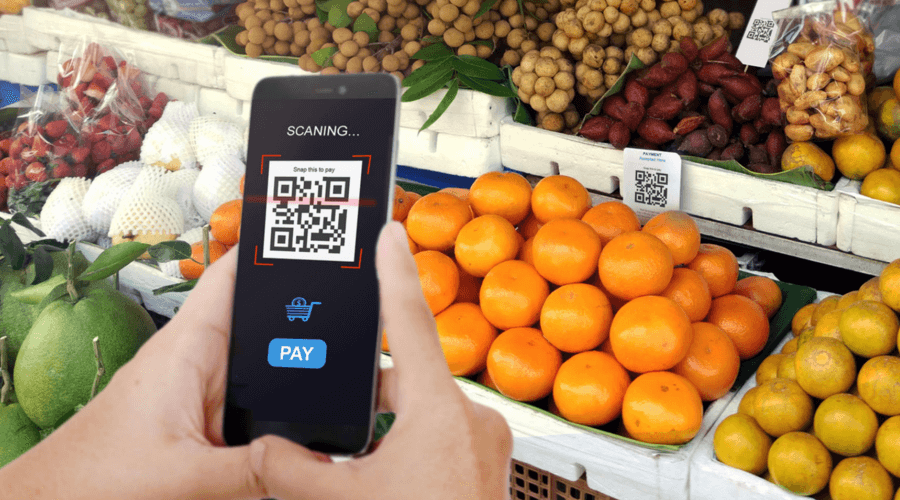Introduction
In today’s fast-paced global food industry, ensuring food safety and traceability is more critical than ever. With increasing concerns over foodborne illnesses, contamination, and fraud, consumers and regulatory bodies demand transparency. Blockchain technology is revolutionizing food safety by providing an immutable, decentralized, and transparent system for tracking food from farm to table. But how exactly does blockchain improve food traceability and safety? Let’s explore.
What Is Blockchain and How Does It Work in Food Safety?
Blockchain is a decentralized digital ledger that records transactions securely and transparently. In the food industry, it allows all stakeholders—including farmers, processors, distributors, retailers, and consumers—to track every step of a product’s journey in real time.
Each transaction is recorded as a “block” and linked to the previous one, forming a secure chain of information. This system prevents tampering and ensures that data is accurate and verifiable. The benefits of blockchain in food safety include improved traceability, enhanced trust, and faster response times to contamination incidents.
The Importance of Traceability in the Food Supply Chain
Traceability is the ability to track food products throughout the supply chain. It helps in:
- Ensuring Quality Control: By monitoring each step, stakeholders can ensure food remains fresh and safe.
- Preventing Food Fraud: Blockchain minimizes the risk of mislabeling or counterfeiting.
- Speeding Up Recalls: In case of contamination, affected products can be identified and removed quickly.
- Building Consumer Trust: Transparency fosters confidence in food brands.
How Blockchain Enhances Food Safety
1. Real-Time Tracking and Transparency
Blockchain records every transaction in real time, allowing companies to verify the origin and condition of food items instantly. For example, Walmart uses blockchain to track leafy greens, reducing the time needed to trace foodborne illness sources from weeks to seconds.
2. Reducing Contamination and Foodborne Illnesses
Food contamination can occur at multiple points in the supply chain. Blockchain allows instant identification of affected batches, reducing outbreaks of diseases like E. coli and Salmonella.
3. Minimizing Food Waste
By tracking expiration dates and storage conditions, blockchain helps reduce food waste. Companies can ensure products are distributed efficiently and reach consumers while still fresh.
4. Eliminating Fraud and Mislabeling
Food fraud is a billion-dollar issue affecting consumers and businesses alike. Blockchain prevents the alteration of product information, ensuring consumers get exactly what they pay for.
5. Compliance with Food Safety Regulations
Governments and regulatory bodies worldwide are pushing for stricter food safety regulations. Blockchain provides auditable records, making it easier for businesses to comply with food safety laws.
Real-World Applications of Blockchain in Food Safety
IBM Food Trust
IBM Food Trust is a blockchain-powered network used by food giants like Nestlé, Walmart, and Carrefour. It enables secure tracking of food products, reducing contamination risks and increasing efficiency.
Nestlé and Carrefour Collaboration
These companies have partnered to allow consumers to scan QR codes on products and instantly access information about sourcing, processing, and storage conditions.
Chinese Food Safety Initiatives
China has implemented blockchain for tracking pork and dairy products, ensuring food safety and boosting consumer confidence.
Challenges in Implementing Blockchain for Food Safety
While blockchain has significant advantages, its adoption faces several challenges:
- High Implementation Costs: Setting up a blockchain system requires investment in technology and training.
- Industry-Wide Adoption: For blockchain to be truly effective, all players in the supply chain must participate.
- Data Accuracy: Blockchain records data accurately, but initial inputs must be correct; human error or fraud at the data entry stage can still pose risks.
- Scalability Issues: Handling large volumes of transactions efficiently remains a challenge for blockchain networks.
The Future of Blockchain in Food Safety
Despite challenges, blockchain’s role in food safety and traceability will continue to expand. As technology advances and adoption increases, costs will decrease, making it more accessible. Future trends may include:
- Integration with IoT Sensors: Smart sensors can feed real-time data on temperature, humidity, and location directly into blockchain systems.
- Artificial Intelligence (AI) for Enhanced Data Analysis: AI can analyze blockchain data for insights into food safety trends and potential risks.
- Government Mandates: More governments may require blockchain-based tracking for food safety compliance.
Conclusion
Blockchain technology is transforming food safety and traceability by offering real-time tracking, reducing contamination risks, and improving consumer trust. Despite challenges, its adoption is growing across the food industry. As companies and governments invest in blockchain solutions, we can expect a safer, more transparent, and efficient food supply chain.
